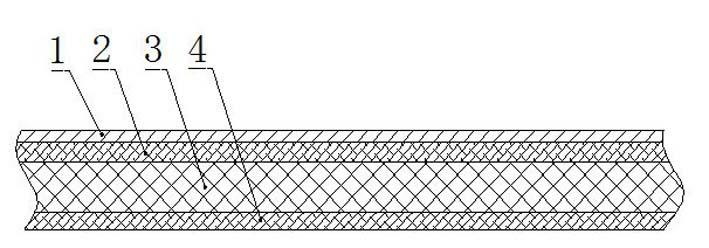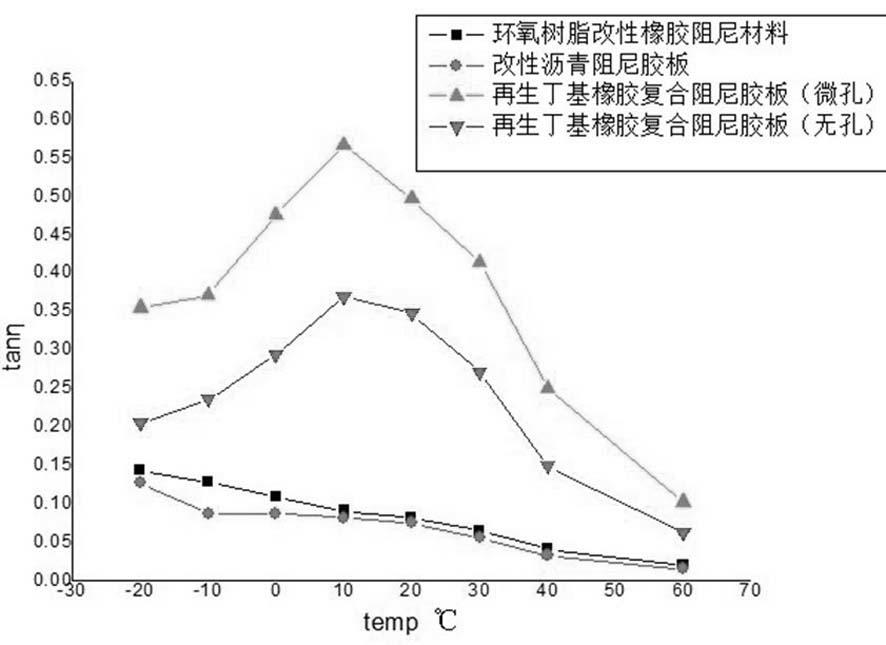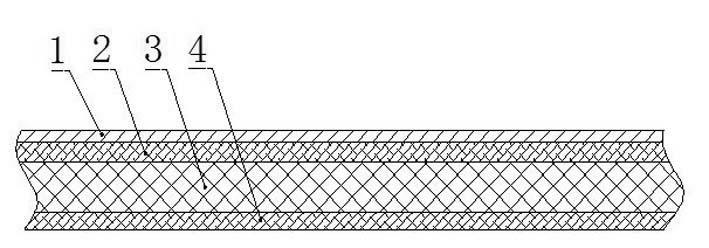Viscoelastic composite damping vibration attenuation rubber plate of ship deck
A composite damping and ship deck technology, applied in the direction of hull deck, hull, ship construction, etc., can solve the problems of affecting the damping effect, poor damping effect, energy consumption, etc., to achieve the effect of ensuring the bonding effect and facilitating construction
- Summary
- Abstract
- Description
- Claims
- Application Information
AI Technical Summary
Problems solved by technology
Method used
Image
Examples
Embodiment Construction
[0016] Such as figure 1 As shown, it includes an aluminum foil constraining layer 1, a viscoelastic damping layer 2, a microcellular foamed damping layer 3, and a viscoelastic and self-adhesive damping layer 4.
[0017] The above-mentioned composite damping plate is composed of aluminum foil constraining layer 1, viscoelastic damping layer 2, main damping layer, viscoelastic and self-adhesive damping layer 4 arranged in order from the outside to the inside. Among them, the main damping layer is the microcellular foamed damping layer 3. The aluminum foil constraining layer 1 is bonded to the microcellular foamed damping layer 3 through the viscoelastic damping layer 2, and the viscoelastic and self-adhesive damping layer 4 is used for bonding and fixing with the inner layer of the ship deck. The microcellular foamed damping layer 3 is a recycled butyl rubber layer or a halogenated butyl rubber layer, which is light in weight, and its thickness can be adjusted between 2-10mm accord...
PUM
| Property | Measurement | Unit |
|---|---|---|
| Thickness | aaaaa | aaaaa |
| Thickness | aaaaa | aaaaa |
| Thickness | aaaaa | aaaaa |
Abstract
Description
Claims
Application Information
 Login to View More
Login to View More - R&D
- Intellectual Property
- Life Sciences
- Materials
- Tech Scout
- Unparalleled Data Quality
- Higher Quality Content
- 60% Fewer Hallucinations
Browse by: Latest US Patents, China's latest patents, Technical Efficacy Thesaurus, Application Domain, Technology Topic, Popular Technical Reports.
© 2025 PatSnap. All rights reserved.Legal|Privacy policy|Modern Slavery Act Transparency Statement|Sitemap|About US| Contact US: help@patsnap.com



